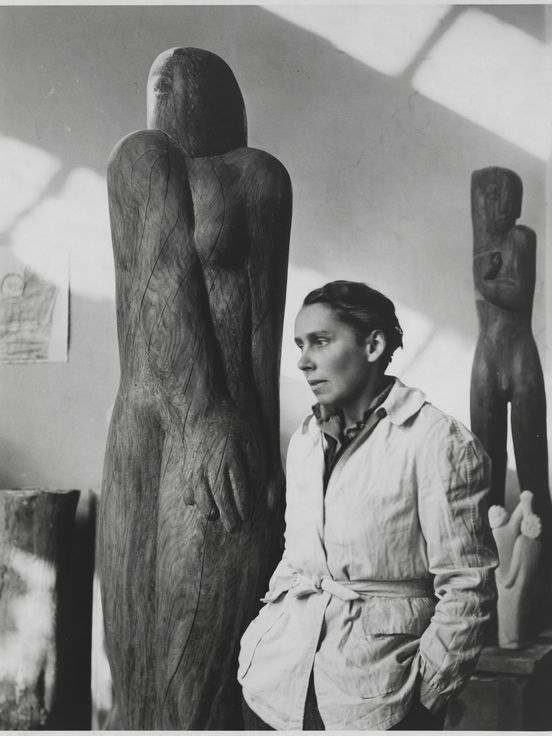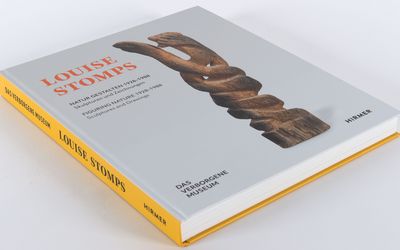Few of her works dating from the 1930s survived, as her studio was hit in an air raid during the Second World War. One is “The Couple”, carved in oak (1937), which shows the deep bond between two lovers kneeling side by side. It still displays a realistic approach to human depictions. These early experiments with a personal style did not, however, conform to the dominant view of art under National Socialism, and as a consequence the artist withdrew into the seclusion of inner emigration.
In October 1945, soon after the Nazi were defeated, Louise Stomps joined Renée Sintenis, Hans Uhlmann, Gustav Seitz, Paul Dierkes, Karl Hartung and others to show at the first exhibition of “Sculpture and Sculptors’ Drawings” at the Gerd Rosen Gallery in Berlin at Kurfürstendamm 215.



